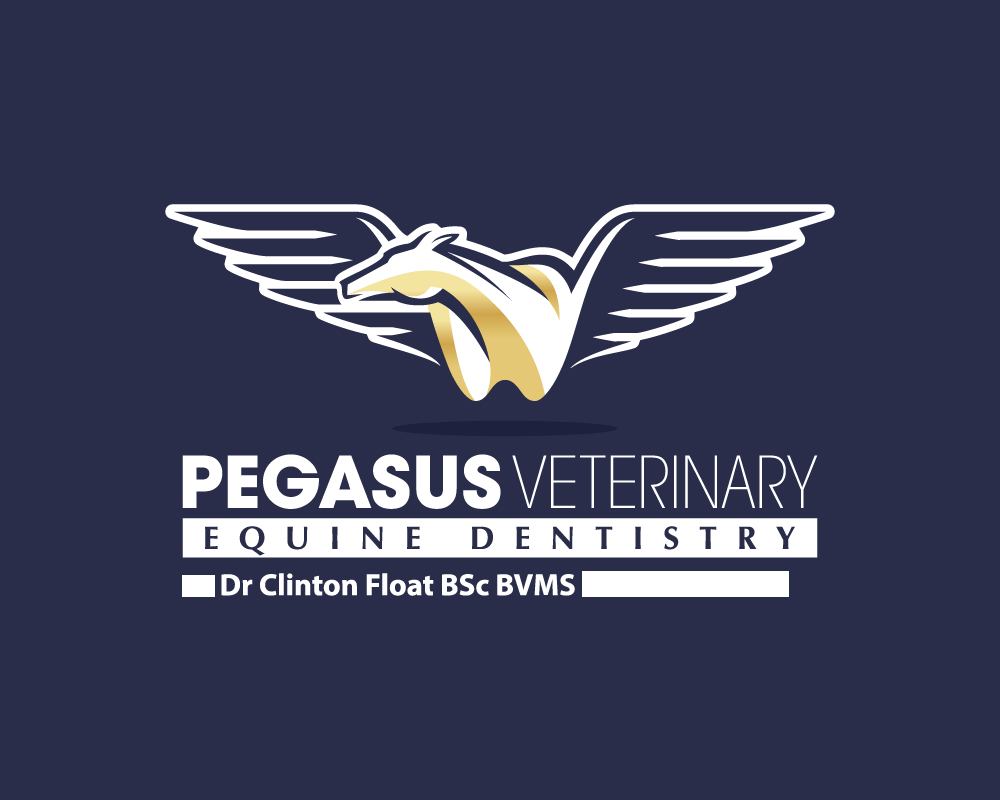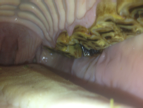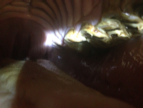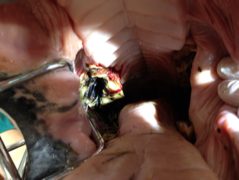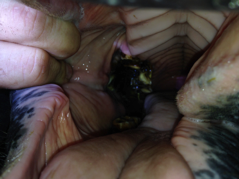Why Do I Recommend Sedating Every Horse?
To ensure the best oral exam can be performed safely and so that any corrective work can be performed without the hinderance of a moving target. Also, certain parts of the mouth are incredibly hard to get to (and sometimes impossible) on unsedated horses, namely the 5th and 6th upper cheek teeth and the sixth cheek tooth on the lower molar row.
The owner of the above horse (photo series above) called me out to perform a routine examination on her gelding. After a brief chat about the horse I had learned that he was resentful under saddle, had been slow to eat his feed and, had a foul smelling breath. He resented palpation of the left molar arcade and placement of the mouth gag prior to sedation. The sedative drugs (relaxants and pain relieving drugs) enabled me to open the mouth fully and perform a thorough inspection of the entire mouth. The photo on the left (previous page) shows how easy it is to miss significant problems in the mouth without the use of a bright light source. Compare this photo with the next one to the right, where a fracture of the fourth cheek tooth can be seen. The tooth was removed under standing sedation orally and the pictures of the extracted tooth clearly show the fracture with the tooth in two pieces once it was extracted.
Imagine the result if a side gag or coil gag were used on this horse with no light source and no sedation? Coil/side gags should now be consigned to the museum as they overload the temporomandibular joints (jaw joint or TMJ) and lead to fracturing of the 4th cheek teeth. It is not uncommon to come across horses with fractured teeth and painful TMJ’s after routine dentistry performed using side gags.
